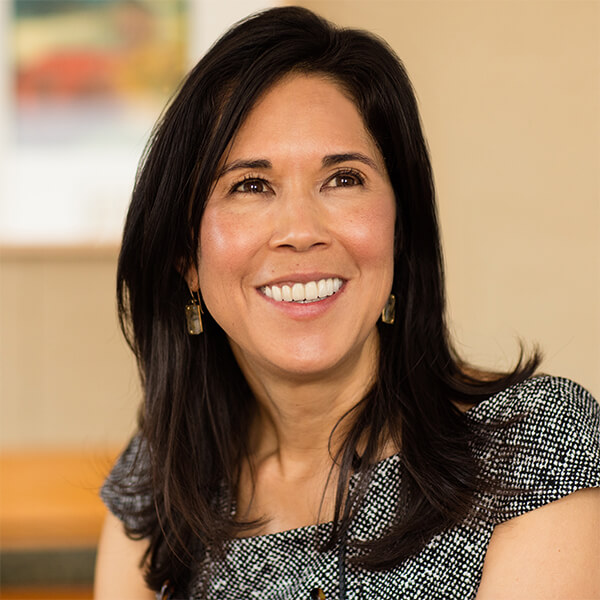Emerging Markets
Investors may be surprised to learn that the latest flashpoint for electric vehicle manufacturing is nowhere near the high-tech hubs of Silicon Valley or Shenzhen. It’s a town in northern Mexico called Santa Catarina, near Monterrey.
That’s where Tesla has announced it will build its first EV manufacturing plant in Mexico, a so-called gigafactory that is expected to cost $5 billion and will reportedly break ground next week, according to local development officials in the state of Nuevo León.
The factory is a huge win for Mexico’s fast-growing economy, but it’s just the latest in a string of global trade victories that have catapulted Mexico ahead of China and Canada as the No. 1 trade partner of the United States. In 2023, for the first time in decades, the U.S. purchased more goods from Mexico than anywhere else in the world.
Mexico rises to the top on a wave of friendshoring

Sources: Capital Group, U.S. Census Bureau. Includes both imports and exports. Figures are seasonally adjusted. As of December 2023.
A friend in need is a friend indeed
“Mexico has benefited probably more than any other country from the trend of friendshoring,” says Capital Group analyst Jeff Garcia, who covers Latin America.
Friendshoring, a derivative of the term offshoring, is a deliberate policy decision to encourage trade with friendly neighbors at a time when geopolitical tensions are increasing around the world, Garcia explains. It’s not a new concept, but it was accelerated by the COVID-19 pandemic as traditional supply chains broke down and companies were forced to find alternatives. Over the past few years, the redrawing of supply chains has been a major boon to India, Vietnam, Thailand, Indonesia and especially Mexico, given its proximity to the world’s largest economy.
“This is a watershed moment for Mexico,” Garcia adds. ”China was the United States’ No. 1 trade partner for about a decade. Before that, it was Canada. So it’s a big change. There’s a saying in Mexico that goes, ‘Tan lejos de Dios y tan cerca a los Estados Unidos,’ which translates to, ‘So far from God, but so close to the United States.’ And it basically means that being on good terms with the world’s largest economy is good for Mexico. And it’s good for the U.S., as well.”
In the years ahead, Garcia expects Mexico’s position to continue improving given the advantages it offers to companies that want to tap into the U.S. market. Those advantages include a skilled labor force at an attractive cost, solid infrastructure in the north, and easy access to relatively inexpensive U.S. oil and natural gas.
In fact, not long after Tesla announced its decision to build a new EV factory in Mexico, one of its top competitors, China-based BYD, said it was planning to follow suit — singling out the same industrial area in Nuevo León. Northern Mexico has long been a popular location for automotive assembly. Ford, General Motors, BMW, Daimler, Toyota and Honda all have plants there. More than 75% of the cars assembled in Mexico are exported to the U.S., according to the Mexican Automotive Manufacturers Association.
U.S.-Mexico trade features a growing and diverse line of products

Sources: Capital Group, World Bank Integrated Trade Solution (WITS). Labels represent products that rank among the top 20 product categories by export value as of 2022. Latest figures available as of February 2024.
Mexico’s industrial renaissance is in full swing
In addition to friendshoring, the investment theme most prevalent in Mexico is the “industrial renaissance,” or reawakening of large-scale industrial spending after decades of underinvestment. The trend bodes well for companies in the construction industry, heating and air conditioning, transportation and related businesses.
“This is an exciting turning point for emerging markets such as Mexico and India, because it represents a broadening of opportunities,” says Brad Freer, a portfolio manager with New World Fund®. “It’s not just China anymore, it’s China plus one.”
“China plus one” refers to the strategy being followed by many multinational companies seeking to diversify their supply chains. They aren’t abandoning China, Freer explains, they are adding capabilities elsewhere. Moreover, Chinese companies are among the biggest participants in this strategy, with the same motivations as U.S. and European companies. The days when the world could rely on one source of cheap manufacturing are over. Diversified supply chains are no longer a luxury but a requirement.
Emerging market opportunities beyond China
On a recent research trip to Monterrey and Tijuana, Freer and Garcia visited several real estate companies, construction firms and auto manufacturers. They also spent half a day touring the Mexican facilities of Carrier Global, one of the world’s largest heating, ventilation and air-conditioning (HVAC) companies.
“I was shocked to see the magnitude of what’s happening,” Freer says. “It reminded me of the cities I visited in China during the 1990s and early 2000s, with these bustling multi-million square foot facilities and thousands of workers building at scale. That's now happening in northern Mexico at a rate that I think is surprising to a lot of people.”
Economic and market tailwinds
The changes are clearly visible in Mexico’s economy, which has been growing at a rapid pace in recent years, providing a healthy tailwind for all types of companies doing business there. The MSCI Mexico Index rose more than 40% in 2023, besting the S&P 500 Index of U.S. stocks by a full 14 percentage points.
Historically speaking, Mexico’s economy has tended to grow roughly in line with the U.S. economy, translating into a modest average 1% to 2% growth in GDP per year over the past two decades.
“What's interesting is that during the last few years, Mexico’s economy has grown by two or three times that rate,” Garcia notes. “Part of the reason is COVID recovery, of course. But another important catalyst has been the increasing level of trade with the U.S, and the modernization of free-trade agreements between the U.S., Mexico and Canada. That's been a big reason why Mexico's GDP is growing well ahead of its long-term trend.”
Mexico’s economic growth has surged in recent years

Sources: Capital Group, The World Bank. Latest figures available as of February 2024.
Amid this remarkable success, Mexico still faces challenges. For example, the benefits of rapid economic development in the north have not been shared by Mexico’s southern regions, where incomes are far lower and job opportunities are scarce. Similarly, cities near the U.S. border tend to have excellent infrastructure, while modern highways are less prevalent in the south.
“Mexico is going through significant change right now, and it is benefiting greatly from the reimagining of supply chains around the world,” says Lisa Thompson, a portfolio manager with New World Fund.
“However, when you go a little bit further away from the border, it’s clear that Mexico isn’t having the same type of success attracting foreign investment,” Thompson says. “There are some big infrastructure weaknesses. They have not invested enough in the electricity grid. And that is holding back advancement in other parts of the country.
“This is an opportunity for Mexico to seize,” she adds. “But, as always, it’s about the execution. I think it will be an exciting story to watch in the years ahead.”
Hear more on this topic:
Investing outside the United States involves risks, such as currency fluctuations, periods of illiquidity and price volatility. These risks may be heightened in connection with investments in developing countries.
The MSCI Mexico Index is a market capitalization-weighted index designed to measure the results of 24 large- and mid-cap companies in Mexico.
S&P 500 Index is a market capitalization-weighted index based on the results of approximately 500 widely held common stocks. The index is unmanaged and, therefore, has no expenses. Investors cannot invest directly in an index.
MSCI has not approved, reviewed or produced this report, makes no express or implied warranties or representations and is not liable whatsoever for any data in the report. You may not redistribute the MSCI data or use it as a basis for other indices or investment products.
The S&P 500 Index is a product of S&P Dow Jones Indices LLC and/or its affiliates and has been licensed for use by Capital Group. Copyright © 2024 S&P Dow Jones Indices LLC, a division of S&P Global, and/or its affiliates. All rights reserved. Redistribution or reproduction in whole or in part is prohibited without written permission of S&P Dow Jones Indices LLC.
Don't miss our latest insights.
Our latest insights
-
-
Emerging Markets
-
Global Equities
-
Economic Indicators
-
RELATED INSIGHTS
-
Emerging Markets
-
Economic Indicators
-
Manufacturing
Don’t miss out
Get the Capital Ideas newsletter in your inbox every other week
 Jeff Garcia
Jeff Garcia
 Brad Freer
Brad Freer
 Lisa Thompson
Lisa Thompson